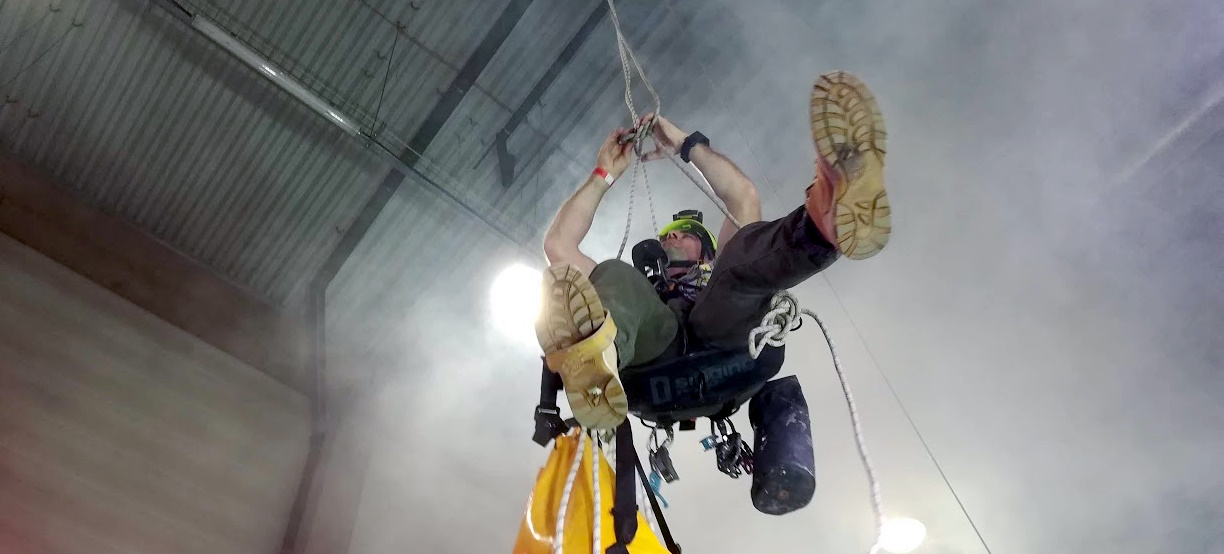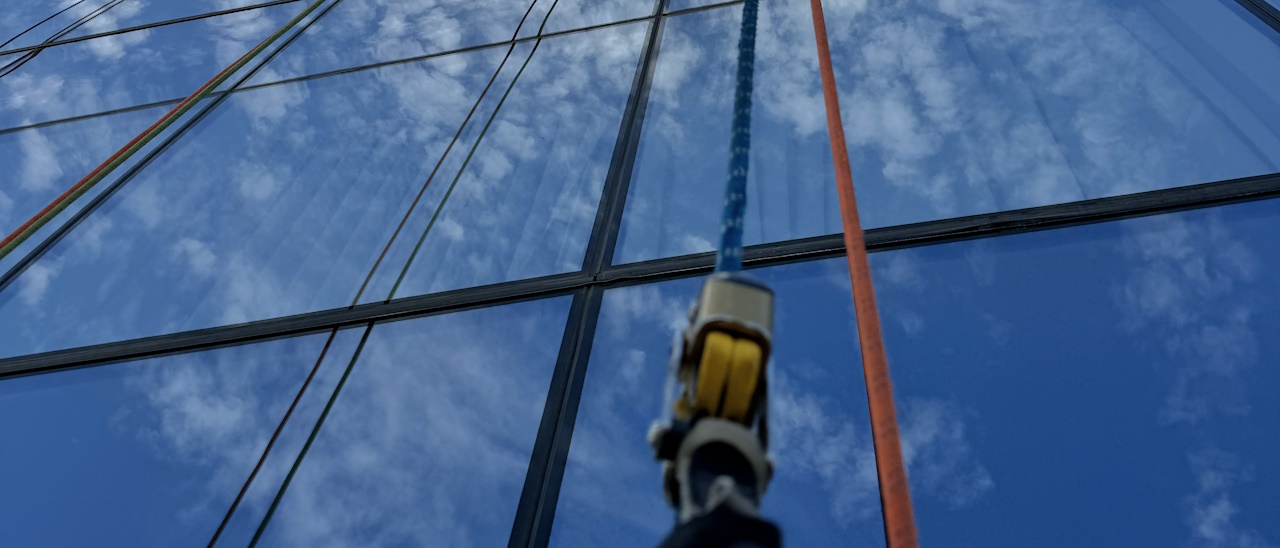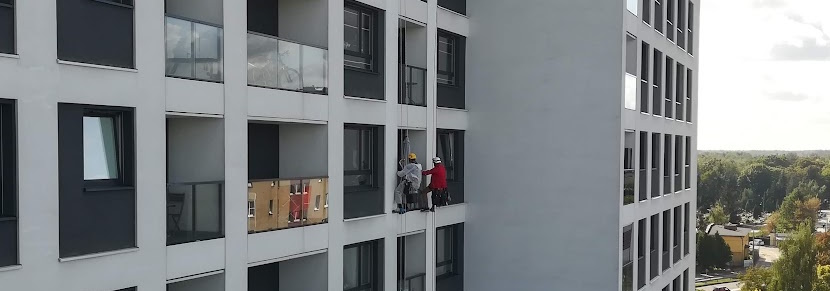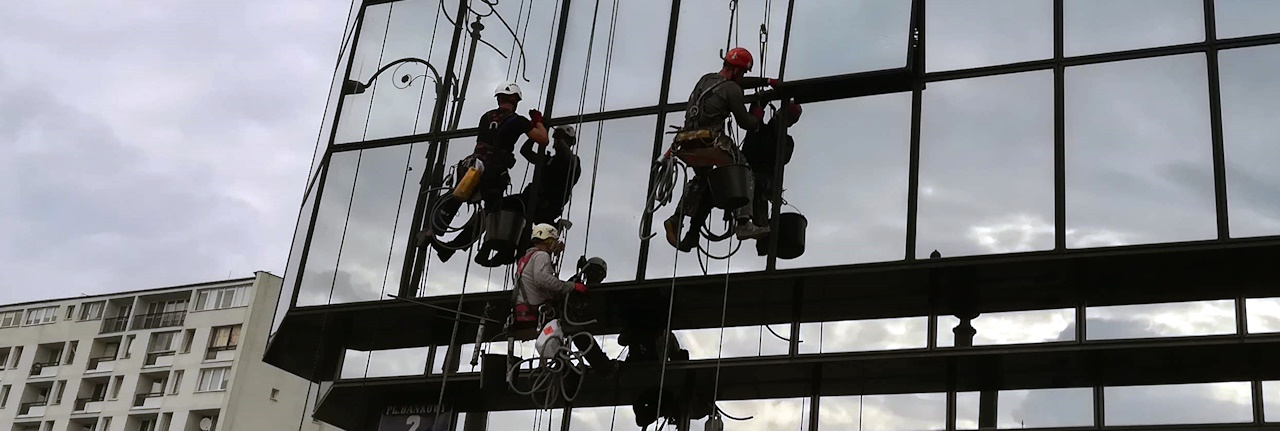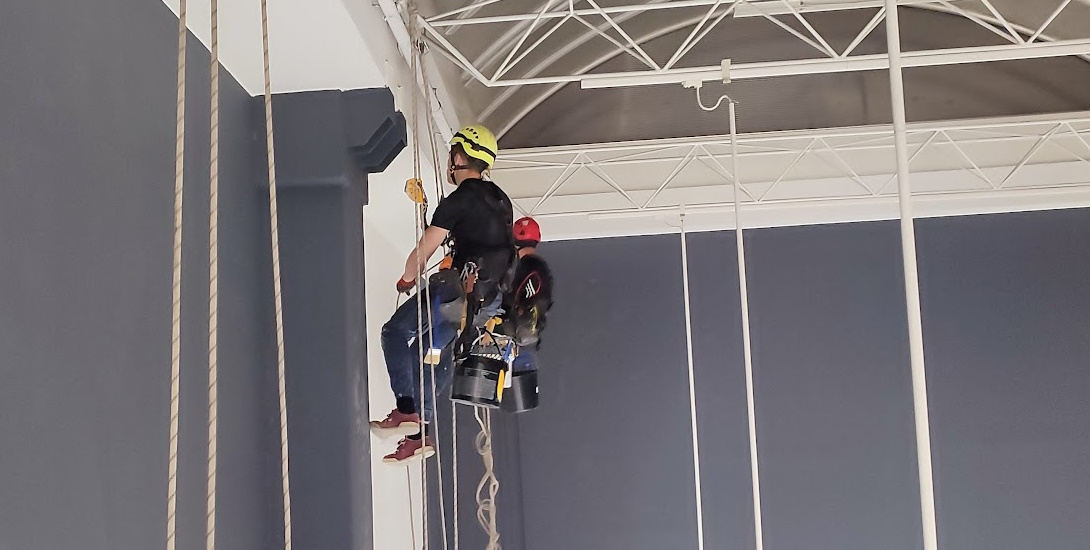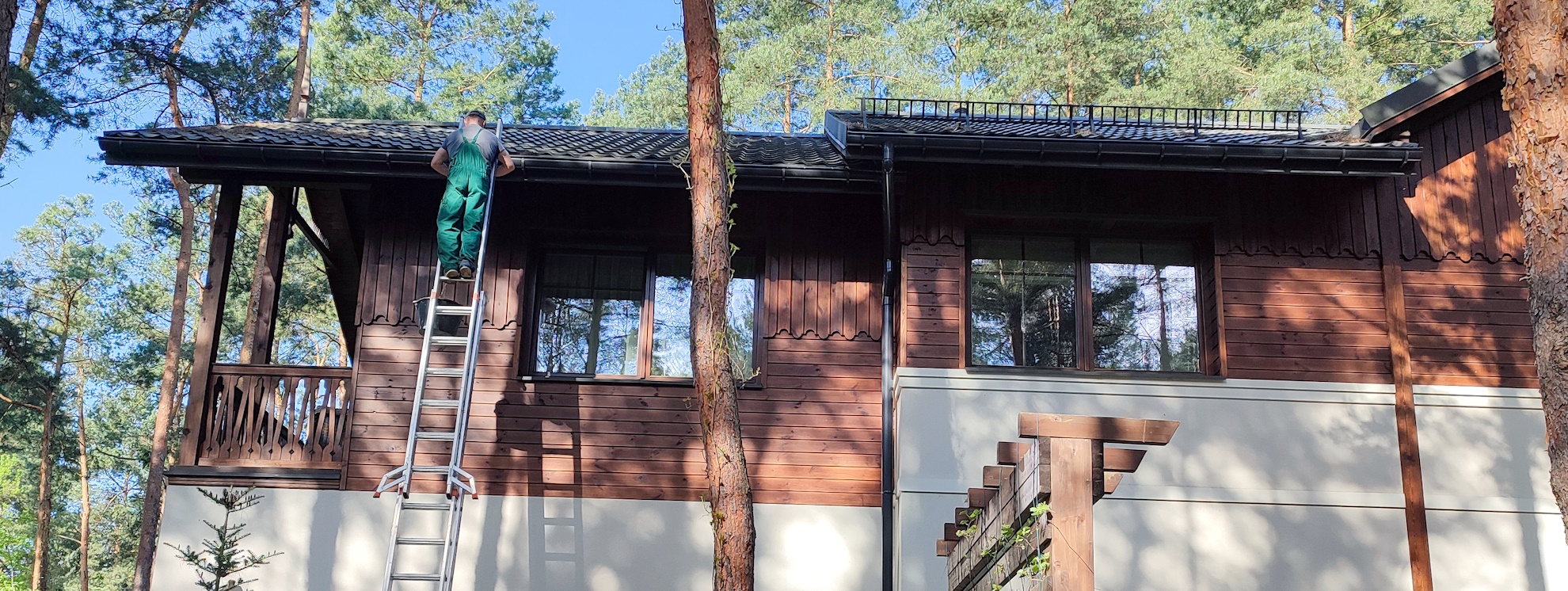Home - Our Blog - When to Use Rope Access?
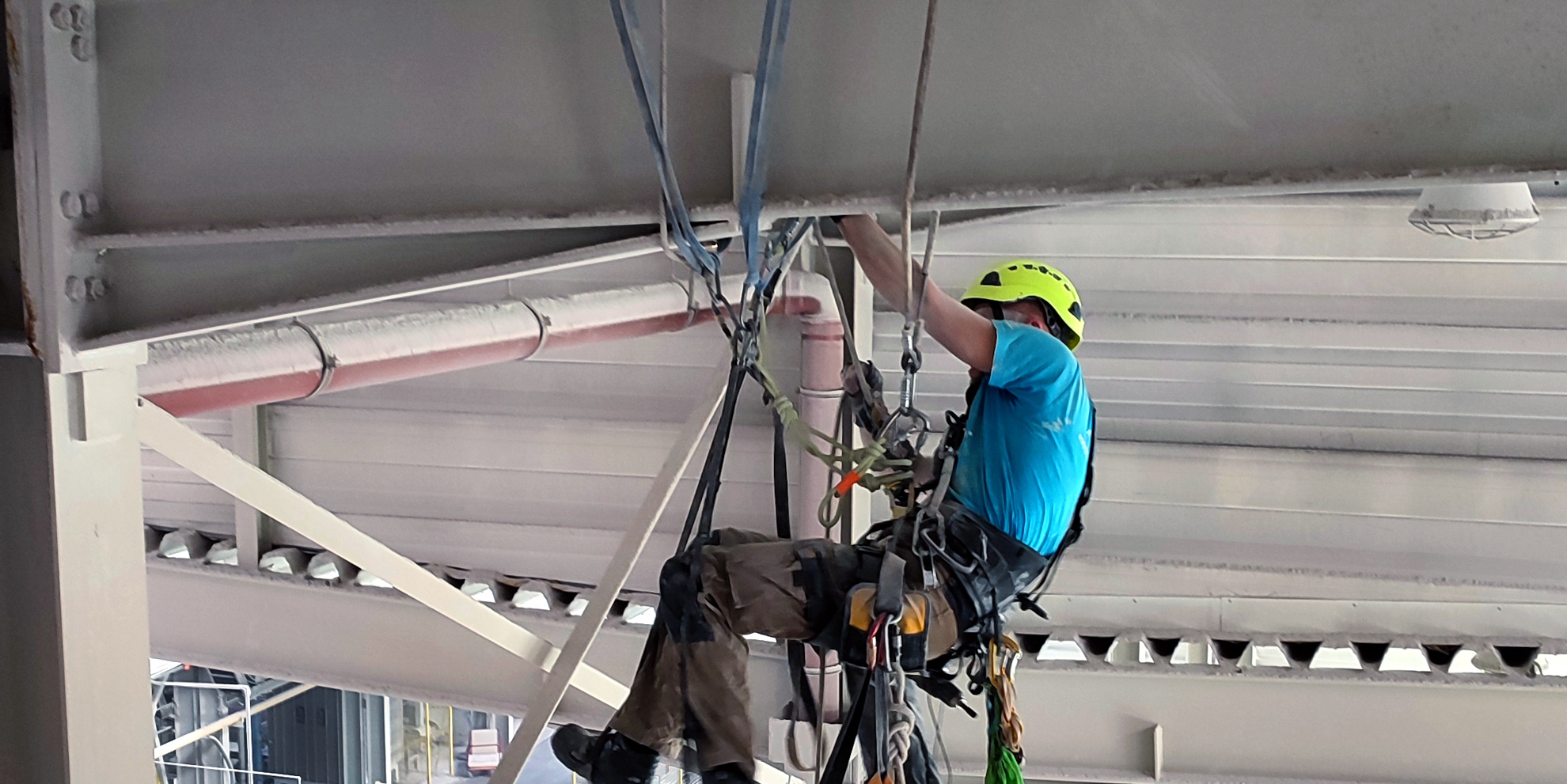
When to Use Rope Access?
Rope access has become an essential technique for working at heights, offering a safe and cost-effective alternative to traditional access methods like scaffolding or lifts. This method is widely used across various industries, from construction and maintenance to inspection and rescue operations. Understanding when and why to use rope access can help property owners, businesses, and industries optimize their operations while ensuring safety and efficiency.
High-Rise Maintenance and Cleaning
Modern cities are filled with skyscrapers and high-rise buildings that require regular maintenance. Rope access is the most practical solution for tasks like window cleaning, facade washing, and general upkeep. Unlike scaffolding, which can take days to set up and dismantle, rope access technicians can begin work almost immediately, reducing costs and minimizing disruptions to businesses and residents.
In Toronto, for instance, countless commercial and residential buildings require regular window cleaning to maintain a professional appearance. Rope access allows skilled technicians to maneuver easily across building exteriors, ensuring that every glass surface is cleaned efficiently. Additionally, high-rise buildings often require pressure washing to remove accumulated dirt and pollution, which is another area where rope access excels.
Structural Inspections and Repairs
Regular inspections and repairs are crucial to maintaining the integrity of buildings and infrastructure. Rope access enables engineers and maintenance workers to conduct detailed assessments of a structure's condition, identifying potential issues before they become major problems. This is particularly useful for inspecting facades, roofs, and other high or hard-to-reach areas.
For example, buildings in downtown Toronto experience wear and tear due to harsh weather conditions. Using rope access, technicians can examine the facade for cracks, leaks, or other structural weaknesses, ensuring timely repairs. Furthermore, applying caulking and sealants to windows and expansion joints is more efficient when done by skilled rope access professionals who can navigate building exteriors with precision.
Construction and Installation Work
Rope access is not limited to maintenance and inspections; it is also highly effective for construction and installation tasks. Many high-rise buildings require specialized installations such as cladding, signage, and lighting systems. Rope access technicians can securely attach signage to skyscrapers, replace building panels, or install decorative elements without the need for heavy machinery.
Signage installation is a common example of how rope access can be beneficial. Businesses in the Greater Toronto Area often need large banners or illuminated signs mounted on high-rise buildings. Traditional installation methods using scaffolding or cranes can be costly and time-consuming, whereas rope access allows for a more efficient and streamlined process.
Industrial Applications
Beyond urban environments, rope access plays a crucial role in industrial settings. Large-scale structures such as bridges, dams, and wind turbines require frequent inspections and maintenance to ensure safety and functionality. Rope access provides a practical solution for reaching high or complex structures without the need for road closures or heavy equipment.
Wind turbine maintenance is a great example of an industry that benefits from rope access. Technicians must inspect, clean, and repair turbine blades that stand hundreds of feet above the ground. Rope access allows workers to navigate these structures with ease, reducing maintenance downtime and increasing efficiency.
Emergency and Rescue Operations
Another critical use of rope access is in emergency and rescue operations. High-angle rescue teams rely on rope access techniques to reach individuals trapped in difficult locations, such as mountain cliffs, tall buildings, or industrial sites. This method is also essential for post-disaster inspections, where rapid access to damaged structures is necessary to assess safety and stability.
Why Rope Access is a Better Choice
There are several reasons why rope access is preferred over traditional access methods like lifts, scaffolding, or mobile elevating platforms:
Cost Efficiency: One of the primary advantages of rope access is its affordability. Setting up scaffolding or renting aerial lifts can be expensive and time-consuming, whereas rope access requires minimal equipment and setup time. Businesses can save significant amounts on labor and operational costs while still achieving high-quality results.
Minimal Disruptions: Unlike scaffolding, which can block sidewalks, entrances, or even entire streets, rope access allows work to be completed with minimal impact on the surrounding area. This is particularly beneficial for busy urban centers like Toronto, where maintaining pedestrian and vehicle flow is crucial.
Safety and Compliance: Rope access professionals undergo rigorous training and certification, ensuring that they adhere to the highest safety standards. In Canada, IRATA and SPRAT-certified technicians follow strict protocols to minimize risks and ensure that all work is carried out safely.
Eco-Friendly Approach: With growing concerns about environmental sustainability, rope access offers a low-impact alternative to traditional methods. It eliminates the need for fuel-powered machinery and reduces the overall carbon footprint of maintenance and construction activities.
Rope access is an invaluable method for accessing high or difficult-to-reach areas safely and efficiently. Whether for high-rise maintenance, structural inspections, industrial applications, or rescue operations, rope access offers a superior alternative to traditional methods. Its cost-effectiveness, speed, and minimal environmental impact make it an ideal choice for modern urban and industrial environments.
For businesses, property managers, and industries looking for a reliable way to perform high-altitude tasks, rope access provides a practical and professional solution. By choosing certified rope access technicians, clients can ensure that their projects are completed with the highest levels of safety, efficiency, and quality.
Author: Alpinist | 377


